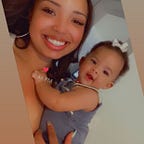Feminist Standpoint Theory
Feminist standpoint theory has 2 basic principles. One being that, “All knowledge is situated, interpreted, and thus local. And two, those belonging to marginalized groups are situated in ways that allow them to see more than those who are not.” In the Journal of Science Communication, Halpern states that this standpoint theory offers a way of thinking about the social and situated nature of science without dismissing the value of scientific knowledge. “Within standpoint theory, our positions outside these central domains of power actually offer us a privileged position from which to better see the knowledge and the systems in which it was created.”
Marie Curie’s personal experiences shaped her work into what it was. What she went through and the choices she made got her to where she was. Her experiences relate to the Feminist standpoint theory and science communication because where she came from allowed her to be appreciative of where she went, she understood what it meant being a woman scientist in that time. She had to deal with not being accepted all the time and even when she was accepted it wasn’t fully and I personally believe it wouldn’t have happened the way it did without her husband, which is sad to say, but it may be true. Even with her husband right by her side, their fellow scientists still were skeptical about the whole thing. (Redniss, 2011).
All while putting in all the hours in the lab and making all the discoveries her and her husband did, she still made time to have a family. She got married and had 2 daughters.
The claim I am going to make will have to do with female scientists and male scientists not having the same equal opportunities. Just like the “real world” work force, male workers are paid more than female workers. I have experienced that personally, being a shift supervisor for almost a year and a new male comes in and gets promoted and I find out he’s getting paid more than me.
The scientist I chose, Katherine Johnson also had a lot of personal experiences that shaped her work. Being one of the first black students to get offered spots at her school, she had to work extra hard around those other students who had it a lot easier. When she began working at NASA, she was working with the African Americans, until she got an opportunity to be a “computer” in the Caucasian area. Even though she graduated with the highest honors in her class, she was still doubted in NASA, until she came up with the calculations that helped Project Apollo. Like Marie, even through all her work and dedication to her job, Katherine went on to have a family. She got married and had 3 daughters.
I am not saying that the same opportunities are not given in science, I am just saying the opportunity would be given to a male before it was given to a female. And because of that females do not get the same “dibs”/advantages within these opportunities given because the male would get to choose first and if he decided not to, then and only then, will the female be considered for that same position.
